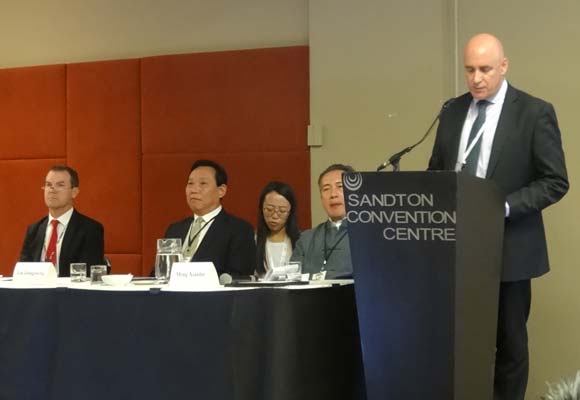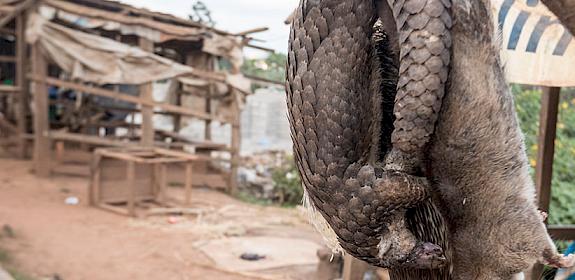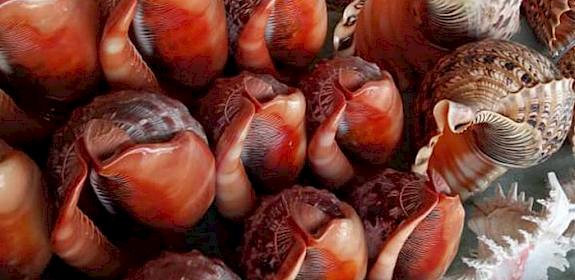China exhibition highlights action taken to implement CITES
Johannesburg, South Africa, 26th September 2016—As the 17th Conference to the Parties to the Convention on International Trade in Endangered Species of Wild Fauna and Flora (CITES CoP17) gets underway, the Chinese delegation has unveiled an exhibition showcasing the recent actions undertaken to implement the Convention in China.
Launched during a side event by the Deputy Administrator of the State Forestry Administration (SFA) and Head of the Chinese Delegation, Liu Dongsheng, the exhibition features posters outlining the legislature, organizational re-structuring, trade management, law enforcement and monitoring, capacity building, public engagement and international collaboration undertaken by authorities in China.
Liu Dongsheng said: "The photo exhibition aims to enhance the understanding of China among international society and push forward the CITES implementation towards strengthening trade regulations and supporting sustainable development.

"CITES is an important mechanism for co-ordinating protection and sustainable utilization of resources. Only if all parties take ownership in their protection endeavours and respect the initiative and practice of every country, can we improve the levels of wildlife protection.
"Source countries, transit countries and consuming countries must take effective measures and co-operate together to combat the whole illegal trade chain from both supply and consumption sides so we can curb wildlife crime fundamentally. Only by improving people's livelihoods and promoting sustainable economic growth in source countries, can we create a sound environment for the survival of endangered species."
The Secretary-General of CITES John Scanlon congratulated China on extraordinary achievement made during his tenure in office in the past 6 years. He told delegates “China is deeply committed to the CITES work and has taken serious measures against illegal trade as well as work on legal and sustainable trade”
The side event at the Sandton Convention Centre, Johannesburg, was co-hosted by TRAFFIC and WWF and attended by more than 120 delegates from CITES national delegations, international organizations and the media.
“As this exhibition demonstrates, China has made a great deal of progress in addressing wildlife trade issues in recent years and even indicated their intention to close the domestic ivory market,” said Steven Broad, Executive Director of TRAFFIC.
“We encourage the Chinese authorities to implement this domestic ivory ban as quickly as possible—if effectively implemented it should mark a significant breakthrough in efforts to protect the world’s elephants.”
Although elephant poaching in Africa appears to have peaked in 2011, around 20,000 continue to be killed illegally each year across the continent, primarily to feed demand for ivory in Asia, particularly in China.
In China, TRAFFIC has been working with government authorities on a range of issues aimed at preventing illegal wildlife trade though effective enforcement action and curbing market demand through effective consumer behaviour change efforts which are also reflected in the exhibition.
Globally, WWF and TRAFFIC work collaboratively to support urgent global efforts to tackle the poaching crisis by targeting all points along the wildlife trafficking chain.



